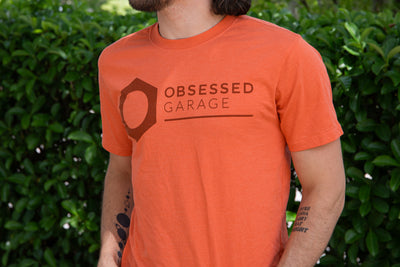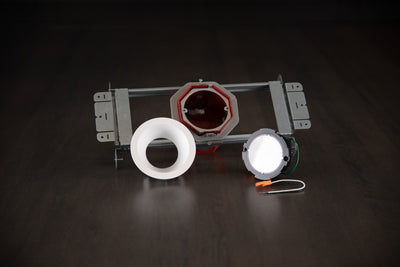What Is The Best Car Wax?

One of the most tried and true products I’ve used over the years has been Collinite 845 Liquid Wax. In my experience, it’s the best car wax on the market. One reason you’d want to use this is if you’re looking for a product that is easy to apply, gives your car paint a high gloss shine, and is less prone to water spots. Unlike a coating that requires some skill and is more labor-intensive, a car wax like Collinite 845 is an easy-on, easy-off application with similar water beading capabilities.
For many years, I was a huge advocate for having wax on my cars. I’ve changed direction and decided to go the ceramic coating route, but I see the benefits of this type of protection on your car’s paint. If clarity, depth, look, and the way water reacts is essential to you, then this is the product you want to go with - it doesn’t give you the longevity a coating would, but if you’re doing regular car detailing maintenance, you’ll get the full life out of it, which is about 7-9 months.
What You’ll Need
You’ll want to be sure you have everything you need before applying paint sealant and wax to your car. If you’re following my process, I’ve found the below products to work best for both application and outcome:
- Polymer Paint Sealant - Jescar’s polymer paint sealant will be your base layer. If you’re wondering what a polymer sealant is, it’s a high-tech wax. Many polymer sealants on the market don’t play well with your traditional waxes; from my research and experience, the Collonite and Jescar are the perfect marriage.
- Car Wax - Collinite 845. The best darn wax on the planet.
- Wax Applicator Pads - Without a doubt, I’ve bought and tried every applicator pad on the market. The design of these pads makes it super simple to apply both Collinite and Power Lock Plus to your paint. The pliability of these is good enough to get into curves and tight spots. I use the yellow one for sealant and the red one for wax.
- Microfiber Wax Removal Towels - I love these towels for the wax and seal removal process. One of the reasons I chose to go with these is because the wax and sealant come right off and don’t get pushed around. I don’t really have an explanation for why I decided to go with gray towels; I guess you could say it’s for uniformity purposes. Oh, and I do keep twenty of them in my locker cabinet. There is no actual reasoning here; I just like knowing I have more than I need if I run low or forget to wash my microfiber towels.

Application
Applying car wax isn’t difficult at all. I did this polymer/car wax process on my Dad’s WRX back in 2018, and it was effortless. One thing you must do before waxing your car is prep the paint. I’ve heard from several people over the years who’ve complained that the wax didn’t come out like they thought it should have - the first question I’d ask them is if they did paint correction to the surface. More times than less, the answer was no. You’ve got to put in the work to get the results.
So, here are the steps I take to paint correct and wax my vehicles:
- Taping. Tape off your vehicle using masking tape. Anything you don’t want your buffer polisher to touch should be masked off - things like your headlights, taillights, emblems, badges, rubber seals around the door jams, plastic trim pieces, etc. You don’t want to run the risk of damaging anything or doing a ton of clean-up from the compound and polishing dust settling in the cracks—this step, although laborious, will be well worth the time and effort in the end. I’ll usually start with my headlights and taillights and then go to the trim. If you’re an insane person like me and let’s say your car has a wing on it, you’re taking that puppy off and polishing that area as well - not necessary, but I’m doing me.
- Polishing. Depending on how soft or hard your paint is will determine what polishing pads you’re going to use. When I polished my Porsche GT4, I used microfiber polishing pads (cutting pads) because the paint is pretty darn hard on those vehicles. I know that because the swirls and scratches didn't come out when I tried using other combinations (pads and compounds). Whenever you’re using any compound or polisher solution, always be sure to shake your bottle before use. Once that’s complete, you’d prime the pad by applying product on it and using a claw pad tool to spread it around. You’ll want to work in sections, and when doing my GT4, I used both a 3” polisher and a 5” polisher. Some spaces will be tighter to hit, so if you can swing it, I’d suggest getting both-size polishers. The Flex XFE has become my new favorite tool to use. When it comes to speed, I’ll usually run my polisher at 4 ½. Another thing you’ll want to do as you’re moving around your vehicle is to inspect your work. This process can be a very humbling experience, so brace yourself. You’ll want to use a detailing or paint correction light to check your paint’s surface after every pass. As you complete each section of your car’s surface, you’ll also be buffing off any product on it with a microfiber towel.
- Clean up. Once you’ve polished your vehicle, you’ll then want to remove any oils leftover. This is where a car polish cleaner comes into the process. Using a product like CARPRO Eraser and a few polish removal towels will get the job done and get you set up for the car wax application.
- Polymer sealant (base layer). The idea here is you want to put a sealant down that will add some longevity to your car wax. Again, we’re looking at about 7-9 months of life with wax if maintained regularly with proper car washing techniques. The lifespan of your wax will also have a lot to do with how you protect it after every wash. I’d suggest using a drying aid to keep that deep shine and add a layer of protection. Putting the polymer sealant on is not difficult at all. The part that I like the most is taking it off - it leaves the paint's surface so smooth. Don’t cheat yourself and only apply this to your paint. It’s not a great standalone product. This matched with Collinite 845 is the perfect pair. What I’ll do is put the Jescar on first with a sealant applicator pad and let that cure for about 3-hours or even overnight. These pads, by the way, are really good. If you care for them properly, you can have them for years and years. I tend to blow them out right before I use them again. So, similar to what we did on the polishing section, we want to prime our pad with the polymer sealant - we don’t need to apply a lot of product. We’re going to work in small sections and a circular motion. I’m telling you, this stuff goes on so smoothly. One thing you may notice is a little grabbing. This will only happen if your pad isn’t set up correctly. You won’t need to revisit your pad over and over again with this product; you can do large sections at a time rather quickly. Always remember to stay organized. Remember the last spot you visited, and your life will be so much better. I like to start from the top and work my way down. When you’re done with this step, the look and feel is like magic. It’s amazing.
- Wax (Polymer base, Carnauba Wax). I like to get a couple of layers of wax on my car paint’s surface. Once I’ve completed the base (polymer) layer, I’ll come back and add my car wax. Having an old-school product like Collinite 845 is just great to have sitting in your garage. I like to squeeze the bottle and make little circles around my wax applicator pad when preparing to apply this product to the surface of my car’s paint. Just like the polymer sealant, I want to manage how much I’m putting on the surface. You’ll see how easy it easy to apply this stuff, especially after having your baser layer solution down. The paint’s surface is going to be super slick. I’d suggest erring on the side of less is more specifically when you’re removing it. I will always tell you to move in a circular motion so that the wax goes on evenly. Do remember to stay organized. I can’t say that enough.
Having the best car wax is one thing, but what’s also important is its application. You don’t want to skimp on steps because, I’m telling you, the results you want won’t be the results you’ll see. If you follow the instructions I’ve shared with you along with watching the videos, you’ll see how easy it is to do the work and bask in the satisfaction of doing it correctly.
I’ve been in this car detailing game for years. No, I’m not a car detailer; I’m an enthusiast prosumer who knows a thing or two about caring for my vehicles. Applying car wax to your car isn’t heart surgery; it’s a simple task that will have extraordinary results when done carefully and correctly.



